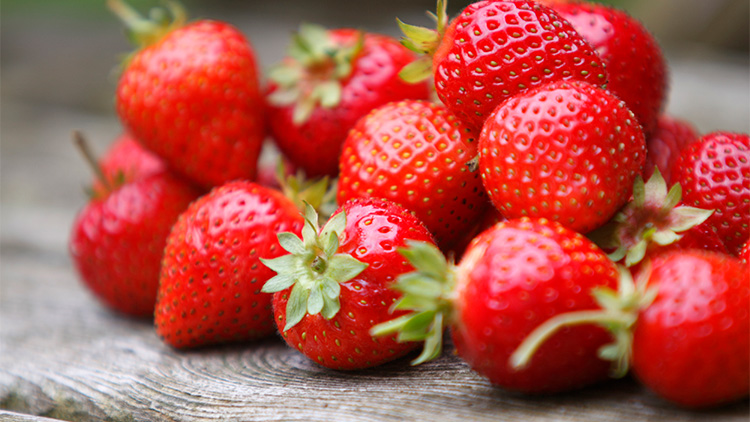Looking for a sweet summer treat? Tired of sugary popsicles? How about strawberries and watermelon blended together in perfect harmony? This sweet summer soup will not disappoint.

Recipe: Summer Soup
- 1/2 Watermelon, medium (approx. 10 inches across) or whole mini watermelon
- 2 Pounds strawberries
- 6 Ounces raspberries
- 1 Tbsp. lemon juice
- Zest of 1 lemon
- 4 Tbsp. almond cream
- Mint leaves and some cream for garnish
Directions
Scoop out all the pulp from the watermelon into a blender and blend till smooth. Keep the skin of the watermelon and save in the refrigerator for later. Stem and quarter the strawberries. Blend till smooth. In blender, blend all raspberry sauce ingredients until very smooth and seeds are gone.
How to serve? This summer soup is best served chilled. If you prepare in advance, keep the soup and raspberry sauce separate in the refrigerator until it is time to serve. For a pretty presentation, you may serve the summer soup in the skin of the watermelon! For each person, pour 2 ladles of summer soup in a soup dish (or watermelon skin), drop a portion of raspberry sauce in the middle, and decorate with a few mint leaves and a drizzle of almond cream.

Star Ingredient:
Strawberries Contain:
Vitamin C*
Did you know the human body does not have the ability to produce vitamin C on its own? That’s why it’s so important to make sure we are eating a wide variety of foods with Vitamin C. This vital vitamin is not only useful to help our bodies fight off the common cold, but it’s necessary for the absorption of iron and very important for our connective tissues. Connective tissues are what keep our skin firm and our muscles strong. Because vitamin C supports our connective tissues, it is also useful in speeding up the healing process. If you have a wound, you might want to consider increasing the intake of foods higher in vitamin C.
Trivia: Cats and dogs can make vitamin C therefore they don’t need fruits and vegetables.
Fiber*
We have all heard we don’t get enough fiber. Do you know why we need fiber? Mainly we need fiber to relieve and reverse symptoms of constipation. Fiber is only found in vegetables, fruits, legumes and whole grains. The fibers of plants are constituents of plant cell walls. Hemicellulose, pectins, gums and mucilages are examples of different types of fiber. Some fibers cannot be digested; however, some can be digested by bacteria in the human digestive tract and can generate some absorbable products which can yield energy when metabolized. Insoluble fibers do not dissolve readily in water while soluble do. Both types contribute to digestive health.
Manganese*
What is manganese? A trace mineral essential for the body to metabolize fats and carbohydrates. In the body, it is found mostly in the bones and glands and is a cofactor for many enzymes, helping to facilitate dozens of metabolic processes. Manganese requirements are low, and plant foods such as nuts, whole grains, and green leafy vegetables contain significant amounts of this trace mineral. Deficiencies are therefore unlikely.
*These statements have not been evaluated by the Food and Drug Administration. This is not intended to diagnose, treat, cure, or prevent any disease.

